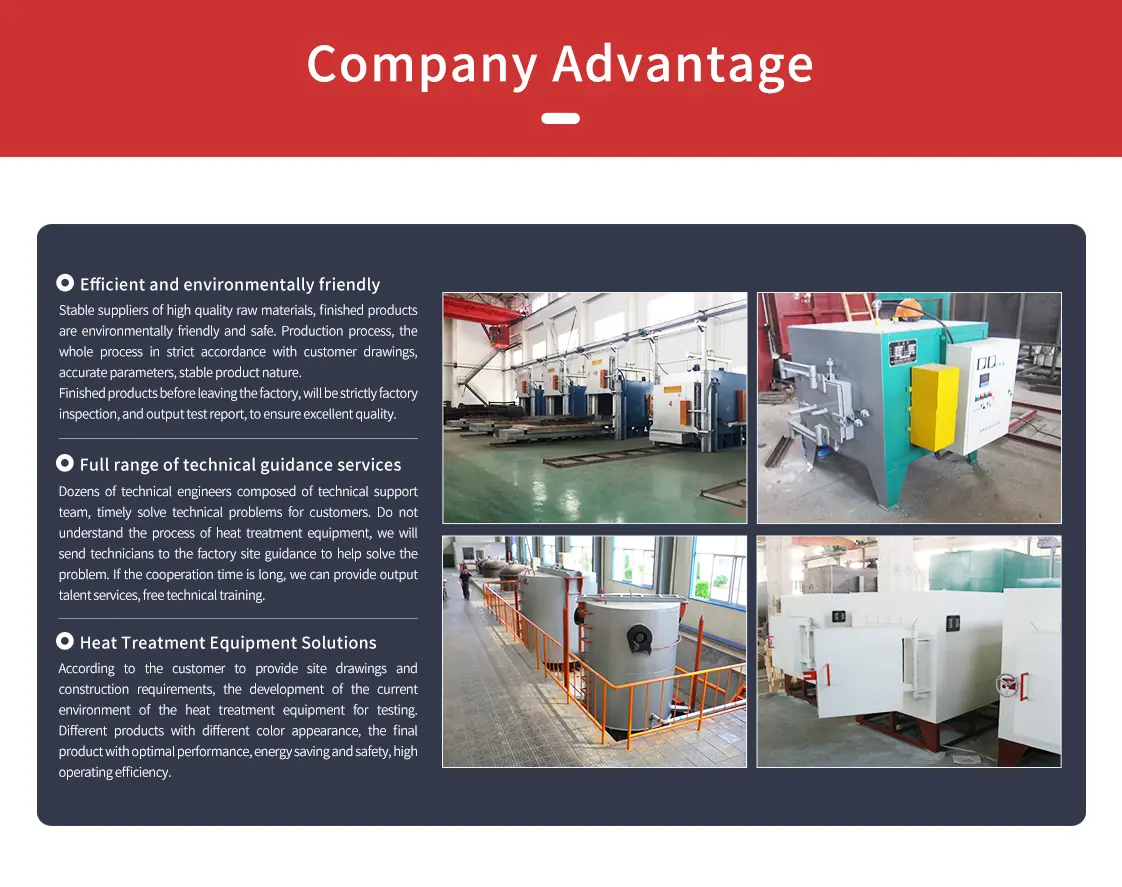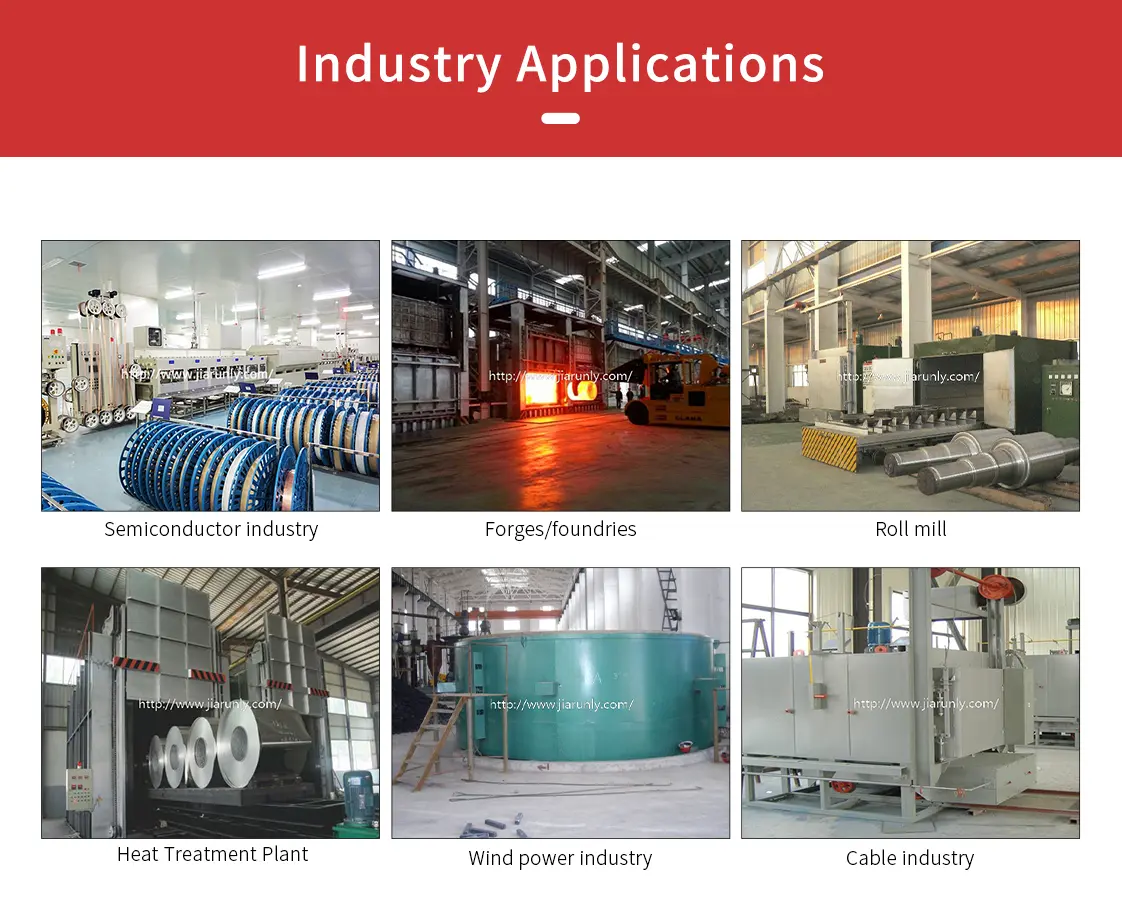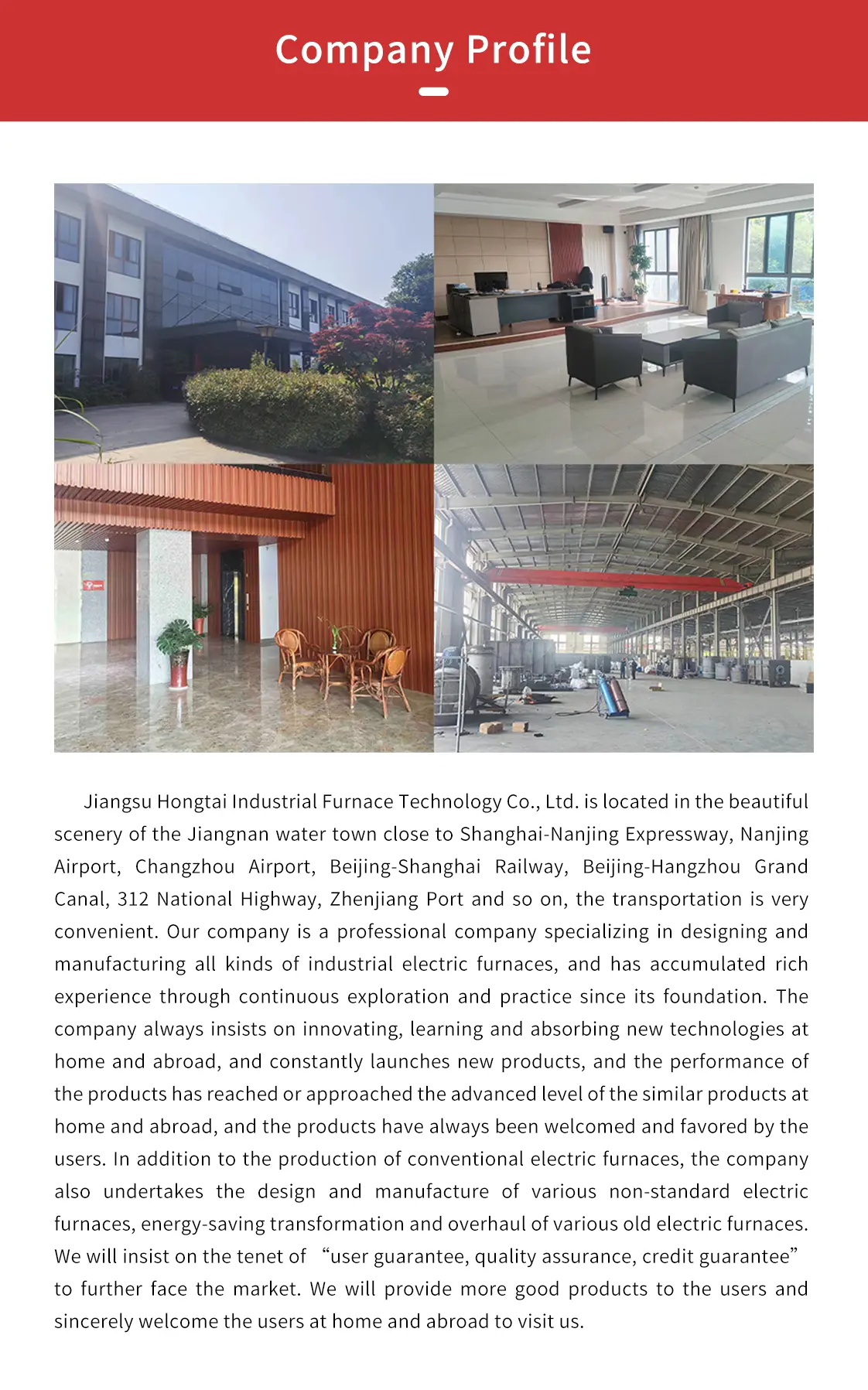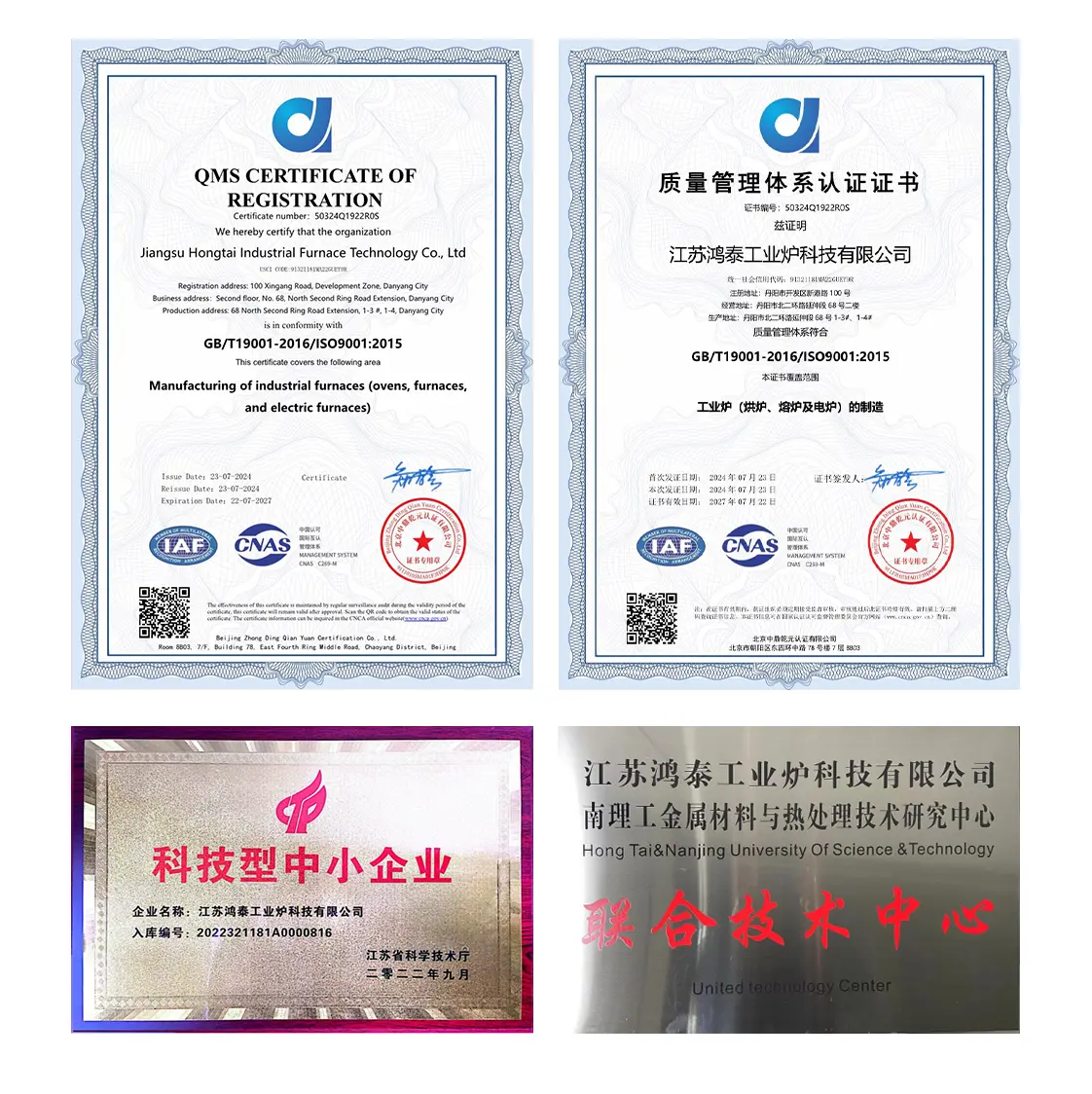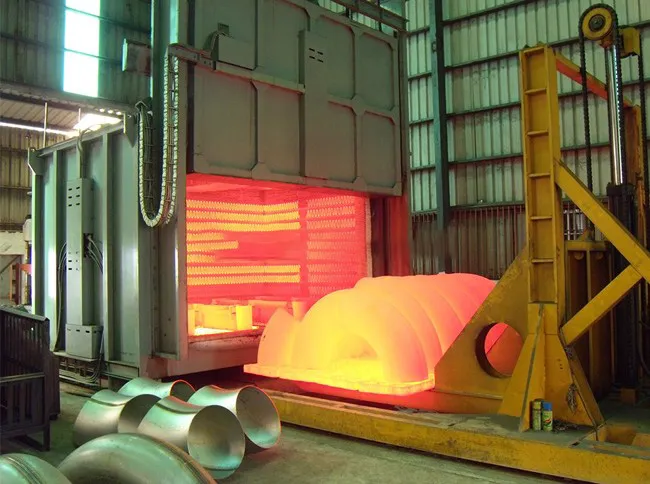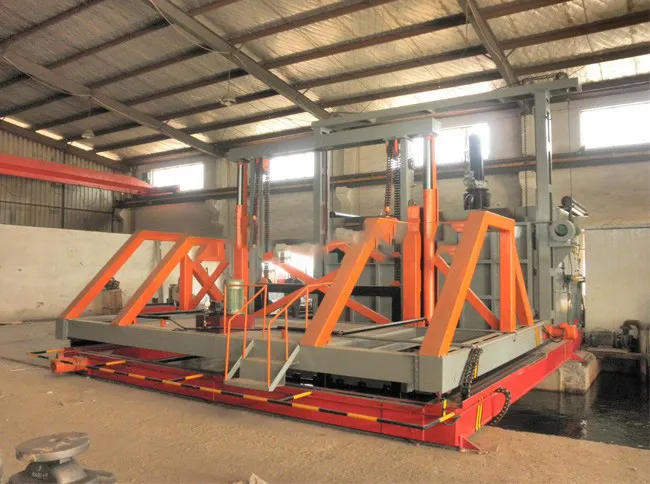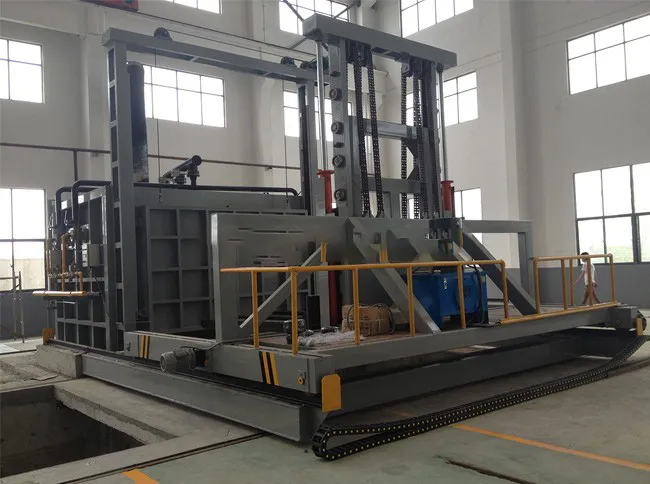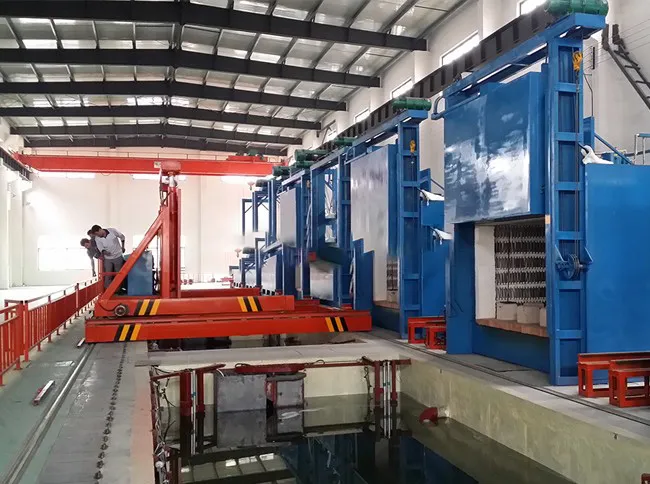- Vacuum furnace & oven
- Annealing Furnace & Oven
- Tempering furnace & oven
-
Carburizing furnace & Ovens
-
Bell Type Furnace
-
Pit Type Furnace & Well Type Furnace
-
Box Furnace & Chamber Furnace
-
Car Bottom Furnace & Bogie Hearth Furnace
-
Nitriding furnace & Ovens
-
Melting furnace & Ovens
- Quenching furnace & Ovens
-
Rapid quenching furnace & Ovens
- Forging furnace & Ovens
- Bright heat treatment furnace & Ovens
Rapid Quenching Furnace & Ovens
Heat treatment furnace manufacturer,Jiangsu Hongtai Industrial Furnace Technology Co., Ltd
The rapid quenching furnace is a cycle type high temperature operation furnace, mainly for general small and medium-sized forgings, castings, etc. in the rated temperature heating.
Rapid Quenching Furnace & Ovens
High-Speed Heat Treatment for Optimal Material Properties
Product Introduction
Our Rapid Quenching Furnaces and Ovens are engineered for high-speed heat treatment processes, crucial for achieving specific material properties such as increased hardness, strength, and wear resistance. These furnaces are designed to rapidly cool heated components in a controlled environment, preventing undesirable microstructural changes and ensuring the desired metallurgical transformation. We offer various quenching mediums, including water, oil, polymer, and gas, tailored to the specific material and application requirements. With advanced temperature control, precise quenching mechanisms, and robust construction, our rapid quenching furnaces deliver consistent and repeatable results, making them ideal for industries like aerospace, automotive, and tool manufacturing where material integrity and performance are paramount.
Key Advantages of Our Rapid Quenching Furnaces & Ovens
- High-Speed Quenching: Designed for rapid cooling to achieve optimal material hardness and strength, preventing unwanted microstructures.
- Precise Temperature Control: Advanced control systems ensure accurate heating and quenching temperatures for consistent and repeatable results.
- Versatile Quenching Mediums: Compatible with various quenching mediums (water, oil, polymer, gas) to suit different material types and desired properties.
- Uniform Quenching: Engineered to provide uniform cooling across the workpiece, minimizing distortion and internal stresses.
- Enhanced Material Properties: Effectively improves hardness, tensile strength, wear resistance, and fatigue life of treated components.
- Reduced Cycle Times: Optimized design and rapid cooling capabilities significantly reduce overall heat treatment cycle times, boosting productivity.
- Robust & Reliable Construction: Built with high-quality materials for durability and long-term performance in demanding industrial environments.
- Safety Features: Equipped with comprehensive safety interlocks and monitoring systems to ensure safe operation.
Technical Specifications
| Parameter | Unit | Range/Value | Notes |
|---|---|---|---|
| Maximum Operating Temperature | °C | Up to 1200 (depending on model and application) | Customizable for specific heat treatment processes |
| Quenching Mediums | - | Water, Oil, Polymer, Gas (Nitrogen, Argon) | Selected based on material and desired cooling rate |
| Quench Speed | seconds | As low as 7-45 (depending on furnace type and load) | Ensures rapid transformation of microstructure |
| Temperature Accuracy | °C | ±3 to ±5 (typical) | Critical for consistent material properties |
| Chamber Dimensions | mm | Customizable | Tailored to workpiece size and production volume |
| Control System | - | PLC-based with HMI, SCADA integration | Automated and programmable for precise process control |
| Power Supply | - | Customizable (e.g., 3-phase, various voltages) | Designed to integrate with existing infrastructure |
Working Principle
Rapid quenching furnaces operate on the principle of accelerating the cooling rate of a heated workpiece to achieve specific metallurgical transformations. After the material is heated to its austenitizing temperature (or solution treatment temperature for non-ferrous alloys), it is quickly transferred into a quenching medium. The rapid heat extraction prevents the formation of undesirable phases and promotes the formation of harder, stronger microstructures, such as martensite in steel. The effectiveness of quenching depends on factors like the type of quenching medium (water, oil, polymer, or gas), the agitation of the medium, and the size and geometry of the workpiece. Advanced rapid quenching systems often incorporate high-volume circulation pumps or powerful gas blowers to ensure uniform and efficient cooling across the entire load, minimizing distortion and residual stresses while maximizing desired material properties.
Process Flow
Loading & Heating
Workpieces are loaded into the furnace and heated to the required temperature.
Rapid Transfer
Heated components are quickly transferred from the heating zone to the quenching zone.
Quenching
Components are rapidly cooled in a controlled quenching medium (water, oil, polymer, or gas).
Unloading & Post-Treatment
Quenched parts are unloaded and may undergo further processes like tempering or cleaning.
Solving Customer Pain Points
Inconsistent Hardness & Material Properties
Our rapid quenching furnaces ensure uniform and controlled cooling, leading to consistent hardness and predictable material properties across all treated components, eliminating soft spots and variations.
Material Distortion & Cracking During Quenching
Advanced quenching mechanisms and precise control over cooling rates minimize thermal shock and internal stresses, significantly reducing the risk of distortion and cracking in sensitive materials.
Slow Production Throughput & Long Cycle Times
Designed for high-speed operation, our furnaces drastically cut down quenching times, boosting overall production throughput and reducing manufacturing bottlenecks.
Oxidation & Surface Contamination
For sensitive materials, our furnaces can operate with protective atmospheres or vacuum environments during heating and quenching, preventing oxidation and maintaining pristine surface finishes.
Lack of Process Control & Data Logging
Equipped with sophisticated PLC/SCADA systems, our furnaces offer comprehensive process control, real-time monitoring, and data logging, ensuring traceability and adherence to strict quality standards.
High Maintenance & Downtime of Quenching Systems
Built with robust components and designed for easy access and maintenance, our furnaces minimize downtime and reduce long-term operational costs, ensuring continuous production.
Customer Success Story
A leading aerospace component manufacturer adopted our rapid gas quenching furnace for their specialized alloy parts. They achieved a 30% reduction in quenching time and a significant improvement in part uniformity, leading to enhanced fatigue life and reduced post-processing requirements. The precise control offered by the system also allowed them to meet stringent industry certifications with ease.
Customization & Support
We offer extensive customization options for furnace size, quenching medium, and control features to perfectly match your specific heat treatment requirements. Our expert team provides comprehensive support from initial design and installation to operator training and ongoing maintenance, ensuring optimal performance and longevity of your rapid quenching furnace.
Related Keywords
rapid quenching furnace, high-speed quenching, heat treatment, material hardening, solution treatment, aerospace heat treatment, automotive heat treatment, industrial quenching oven, vacuum quenching, gas quenching, oil quenching, water quenching, metallurgical furnace
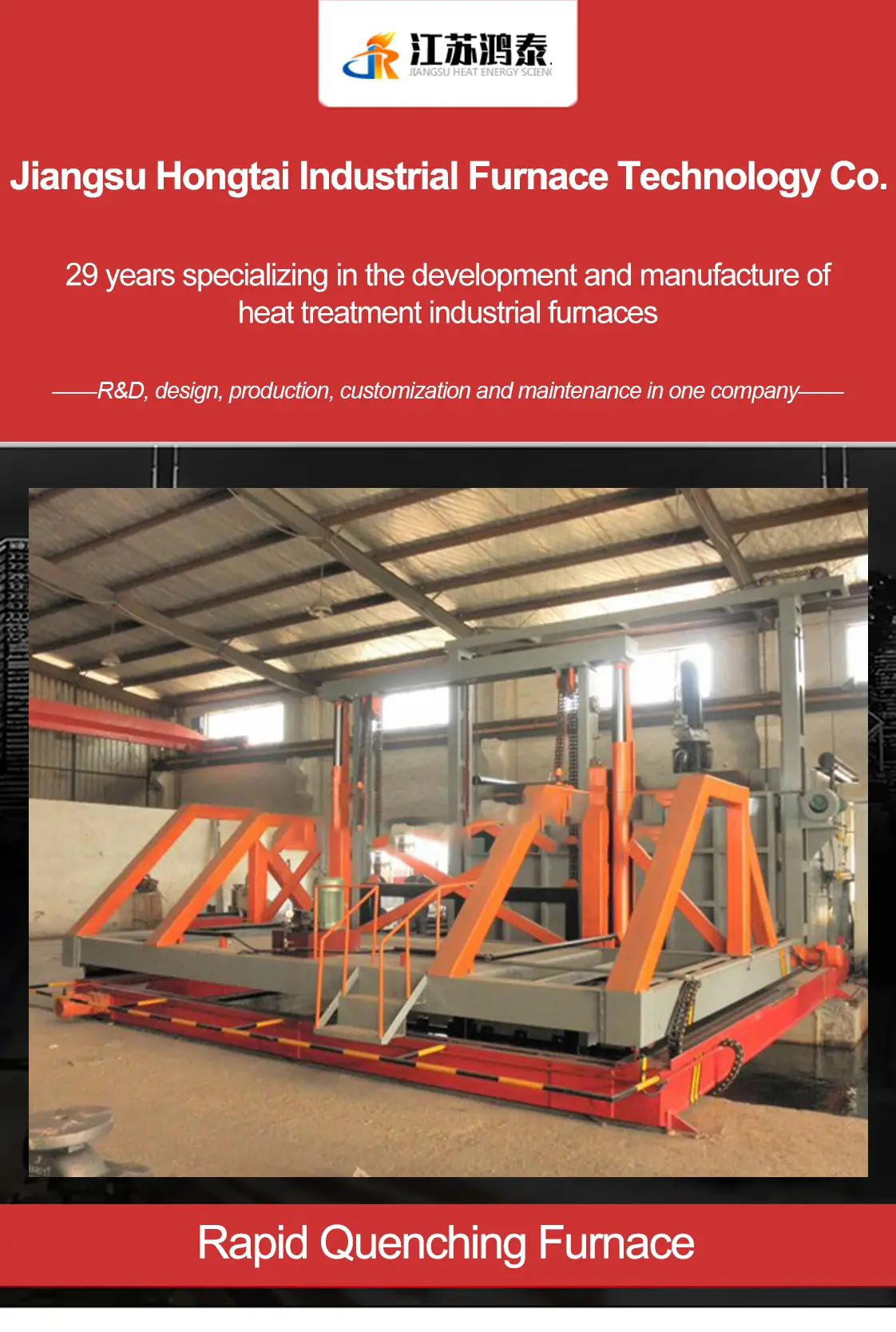
Rapid Quenching Furnace & Oven Technology Overview
1. Core Operating Principle
The rapid quenching oven achieves metallurgical transformation through precisely controlled cooling dynamics. Its three-stage thermal management system features:
Gas Jet ImpingementHigh-velocity nitrogen streams (Mach 0.3-0.5) penetrate the workpiece surface, creating turbulent heat transfer that enables 500°C/s cooling rates for aerospace aluminum alloys
Modular Quench ZonesInterchangeable nozzle arrays allow customized cooling profiles - critical for achieving graded hardness in mining drill bits (surface 65HRC/core 45HRC)
Real-Time Phase MonitoringIn-situ XRD sensors detect austenite-to-martensite conversion, dynamically adjusting quench intensity during automotive gear manufacturing
2. Process Innovations
Differential Quenching: Selective nozzle activation creates alternating hard/soft zones in agricultural knife blades
Interrupted Cooling: Programmed gas flow pauses enable bainite formation in railway springs
Surface Engineering: Gas mixture modulation produces oxide dispersion layers on turbine blades
3. Industrial Value Proposition
This technology bridges the gap between material properties and component performance:
40% longer service life for oil drilling tools
30% weight reduction in automotive suspension components
60% energy savings compared to oil quenching systems
Key Applications:
Helicopter rotor bearings
High-speed train brake discs
Surgical instrument blades
This set of quenching unit for my company's patented products, Patent No.: ZL201020172763.1, the furnace with reference to API6A standard design and development, in the production and use of up to 3 years, constantly listen to user comments, and step-by-step improvement, now the performance indicators have reached the user's requirements, the user is very satisfied with the set of units, and has given a high degree of evaluation.
This set of quenching unit has more than one bell-type resistance furnace and a quenching operation car combination for a rapid quenching unit production line, a unit can be based on the user's production and process requirements supporting several different furnace types, the number of furnaces and furnace types can be freely combined, the production line can meet different production processes such as: quenching, tempering, annealing, tempering and other heat treatment processes, furnace temperature of 1200 ℃, 950 ℃, 700 ℃. 700 ℃, etc. Each production line is equipped with a fast underwater quenching operation car, the operation car can be up and down, left and right, front and rear six-direction movement, the workpiece heat treatment is completed, the operation car quickly into the furnace to fork out the workpiece from the furnace chamber, and quickly fall into the pool or quenching liquid pool, the whole process is completed in 1 minute, the production efficiency is high, the operation is easy to operate, so as to ensure that the quenching quality of the workpiece.
This set of quenching unit of the whole process, including from loading to out of the furnace, as long as two staff can be completed, the entire operation into an assembly line operation, easy to operate, low labor intensity, work efficiency has been greatly improved, after my company's training operators will easily grasp the operating technology.
Structure Introduction:
(1) This equipment consists of a furnace body and a movable trolley, etc.
(2) Furnace shell and cart are welded by steel plate and section steel.
(3) The heating element adopts the high resistance alloy HRE resistance band produced by Shougang, which is arranged at the side, door, back wall and bottom of the furnace, and the heating is done on five sides to improve the uniformity of the furnace temperature.
(4) The furnace lining is made of Shandong Luyang high-temperature fiber module cotton, and the load-bearing part of the bottom of the furnace is made of heavy refractory bricks to enhance the structural strength of the furnace lining and improve the heat preservation performance of the furnace body.
Main technical characteristics
The furnace is mainly composed of furnace body (steel structure), furnace lining, door lifting and sealing device, special forklift, forklift drive mechanism, electric heating device, temperature control and recording system and other major components.
Specialized forklift
Specialized forklift is set in front of the quenching furnace, with an independent track and transmission device, which can carry the workpiece forward and backward in and out, left and right translation and up and down lifting. One forklift can be used for quenching furnace and tempering furnace.
